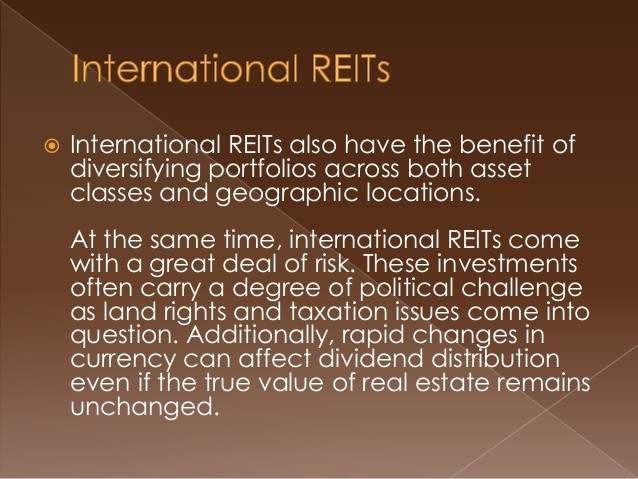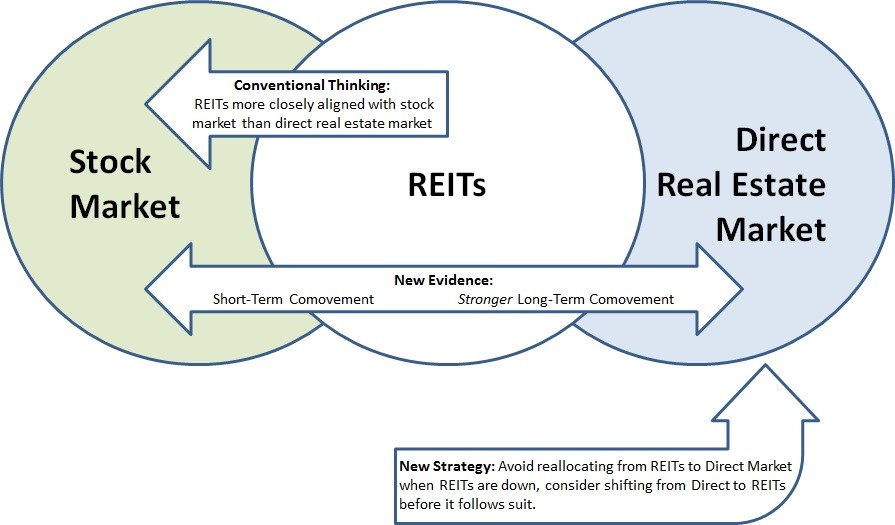Real Estate Investing Through REITs
Post on: 10 Июнь, 2015 No Comment

The Benefits of Property Ownership without the Hassle
Prior to the onset of the industrial revolution, wealth and power was measured primarily in terms of the amount of land owned by an individual or family. Although the twentieth century saw the rise of securitization and the resulting increase in stock and bond ownership, real estate investing can still prove a profitable option for those who are actively engaged in an asset allocation program or just looking to diversify their current portfolio. Real estate investment trusts. or REITs, can be a convenient way for the average investor to profit without the hassle of direct property acquisition. That is why we included this five-page essay in our
Prior to 1960, only wealthy individuals and corporations had the financial resources necessary to invest in significant real estate projects such as shopping malls, corporate parks and health care facilities. In response, Congress passed the Real Estate Investment Trust Act of 1960. The legislation exempted these special-purpose companies from corporate income tax if certain criterion were met. It was hoped that the financial incentive would cause investors to pool their resources together to form companies with significant real estate assets, providing the same opportunities to the average American as were available to the elite. Three years later, the first REIT was formed.
The original legislation had some significant drawbacks, however, in that it required the executives in charge of the business to hire third parties to provide management and property leasing services. These restrictions were lifted in the Tax Reform Act of 1986. Thirteen years later, in 1999, the REIT Modernization Act was passed. The law allows REITs to form taxable subsidiaries in order to provide specialized services to tenants that normally fall outside the purview of real estate investing. Although the law still has some limitations as to the types of services that can be offered, it is expected that the quality of service at REIT-managed properties will improve significantly as a result of its passage.
Requirements for REIT status
According to Ralph Block in Investing in REITs: Real Estate Investment Trusts. every REIT must pass these four tests annually in order to retain its special tax status:
- The REIT must distribute at least 90 percent of its annual taxable income, excluding capital gains. as dividends to its shareholders.
- The REIT must have at least 75 percent of its assets invested in real estate. mortgage loans. shares in other REITs, cash, or government securities .
- The REIT must derive at least 75 percent of its gross income from rents, mortgage interest. or gains from the sale of real property. And at least 95 percent must come from these sources, together with dividends, interest and gains from securities sales.
- The REIT must have at least 100 shareholders and must have less than 50 percent of the outstanding shares concentrated in the hands of five or fewer shareholders.

In addition to the prevention of double-taxation, REITs offer numerous other benefits which include:
Professional management
Limitation of personal risk
Purchasing a REIT. on the other hand, can be done with only a few hundred dollars as share prices are often as low, if not lower, than equities. An investor that wants to invest $3,000 in real estate will reap the same rewards on a pro-rated basis as those who want to invest $100,000; in the past, it simply wasnt possible to get this kind of diversification in the real estate asset class without taking on partners or using leverage .














